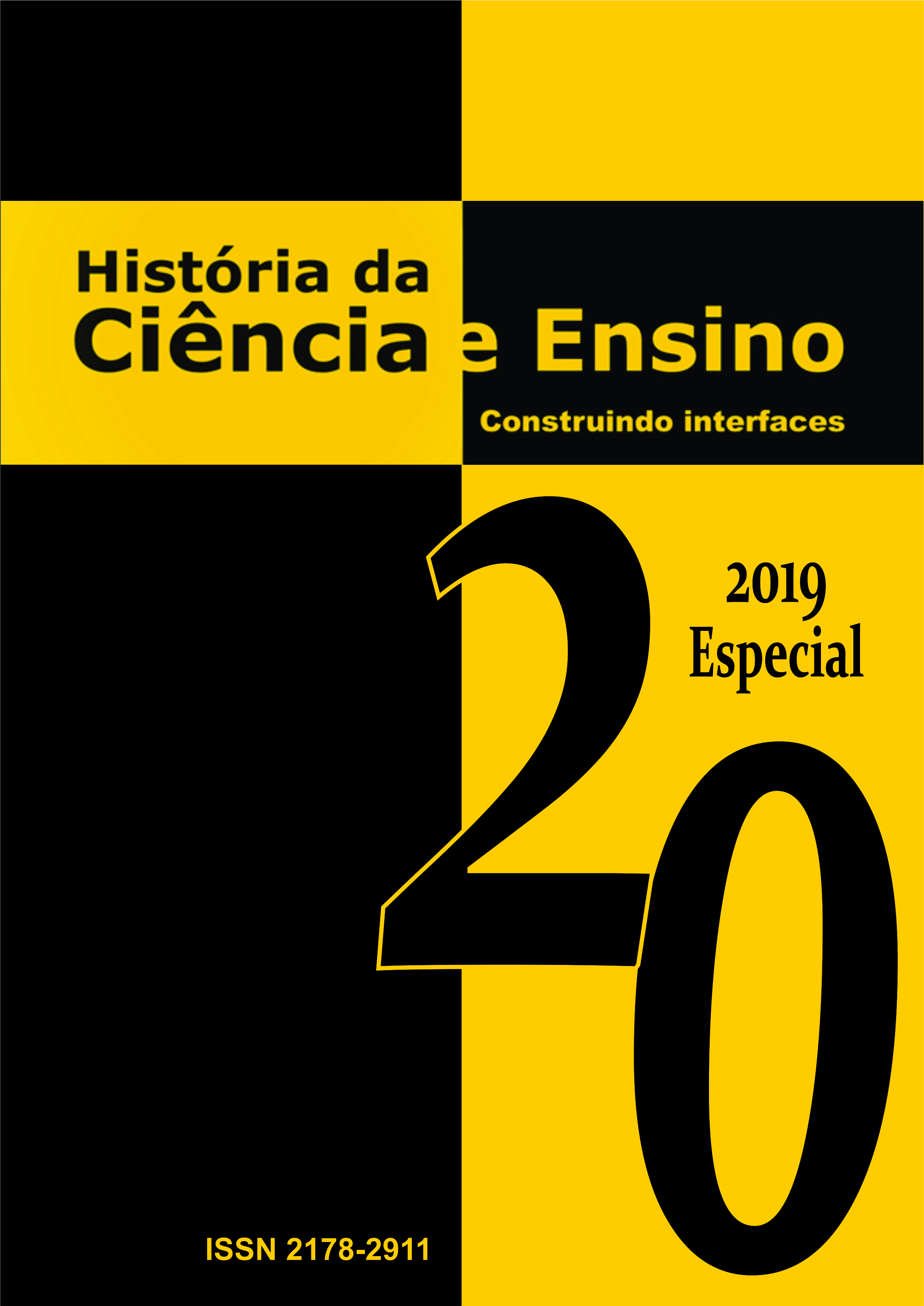Partículas alfa como projéteis subatômicos: os trabalhos de Hans Geiger
DOI:
https://doi.org/10.23925/2178-2911.2019v20espp695-701Resumo
Resumo
Os trabalhos para desvendar a estrutura da matéria no começo do século passado fizeram com que vários cientistas elaborassem diferentes experimentos de modo a permitir o entendimento e o arranjo atômico em diferentes metais. Um dos físicos que merece destaque foi Johannes Wilhelm Geiger (18821945), também conhecido como Hans Geiger, que desenvolveu uma maneira de estudar a estrutura dos metais utilizando partículas alfa provenientes de compostos de rádio. A técnica consistia em bombardear finas folhas de diferentes metais com partículas alfa e analisar seus desvios. Essa técnica possibilitou que, futuramente, fosse possível a elaboração de outro experimento que constatou, entre outros aspectos, o núcleo atômico. Será́ apresentado, portanto, neste artigo a tradução comentada do artigo On the Scattering of the α–Particles by Matter.
Palavras-chave: Partícula alfa; espalhamento de partículas; Hans Geiger
Abstract
The work to unravel the structure of matter at the beginning of the last century led several scientists to design different experiments to allow understanding and arrangement atomic metals. One of the prominent physicists was Johannes Wilhelm Geiger (18821945), also known as Hans Geiger, who developed a way to study the structure of metals using alpha particles from radio compounds. The technique consisted of bombarding thin sheets of different metals with alpha particles and analyzing their deviations. This technique made it possible, in the future, to develop another experiment that found, among other aspects, the atomic nucleus. Therefore, it will be presented in this paper how Hans Geiger elaborated his experiments, highlighting their results and difficulties. In addition, the importance of this historical episode in Basic Education will be discussed.
Keywords: Alpha particles; scattering particle; Hans Geiger


